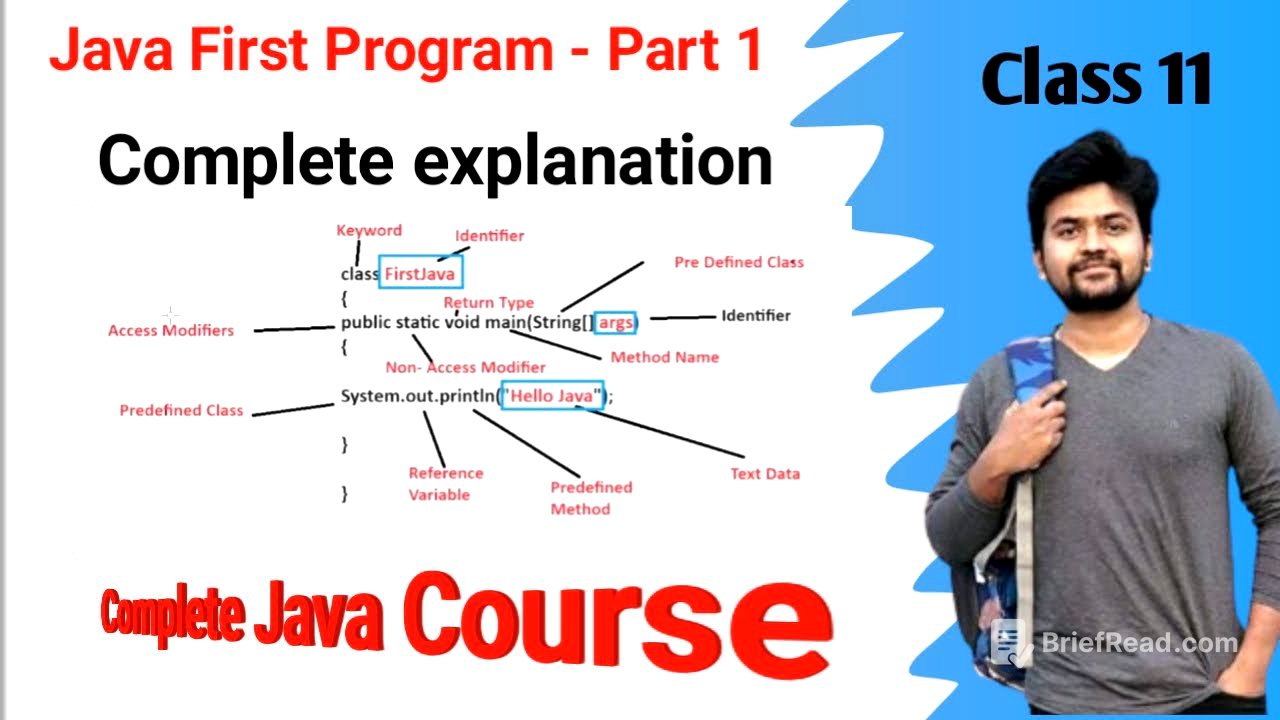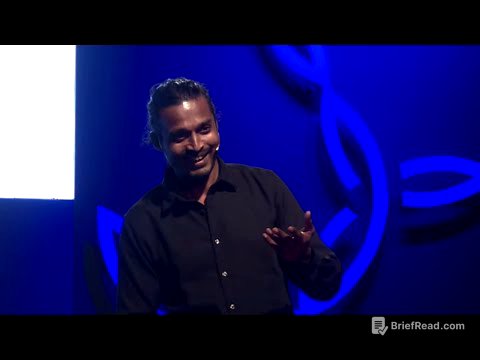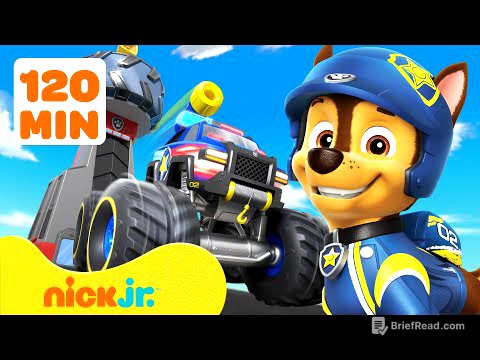TLDR;
This video provides a detailed breakdown of the Java programming language, focusing on the key components of a simple Java program. It explains the rules and regulations that need to be followed when writing Java code, similar to writing an essay. The video also introduces important terminology such as keywords, identifiers, access modifiers, and return types.
- Java is a high-level programming language easily readable by humans.
- Understanding keywords is crucial for mastering Java.
- The main method is the entry point for Java programs and has a specific syntax.
Introduction to Java Programming [0:00]
The video begins by outlining five key areas to understand Java: writing the first program, understanding compilation, installing Java software, and understanding the control flow of a Java program within the operating system. The goal is to provide clarity on how Java communicates with the operating system and the processes involved in compilation and execution.
Writing a Simple Java Program [1:44]
The author writes a basic Java program to dissect its components. The code includes a class declaration, the main method, and a print statement. While the code may appear simple, many internal processes occur during compilation and execution. Understanding these processes is essential for writing effective Java code. The author emphasises that Java code is readable, resembling English, but interpretation requires understanding how the code communicates with the computer.
Rules and Regulations in Java Programming [5:12]
Just like writing an English essay requires following rules for structure and grammar, writing Java code requires adhering to specific rules and regulations. These rules ensure that the code is correctly interpreted by the computer. The code acts as instructions that communicate with the computer to produce the desired output. Java is a high-level language, making it readable, but understanding the interpretation is crucial. A programmer provides instructions in the form of data, which the computer interprets to produce information.
Keywords, Identifiers and Access Modifiers [13:21]
The video identifies and explains the different words used in the sample Java program. These words are categorised as keywords, identifiers, access modifiers, predefined classes, reference variables, predefined methods, and text data. Keywords like class and public have specific meanings and roles in the Java language. Identifiers are names given to classes, variables, and methods. Access modifiers, such as public, control the visibility of classes, methods, and variables.
In-depth Look at Java Keywords [19:47]
The author explains that keywords are reserved words in Java used to declare variables, methods, or classes. There are 51 reserved keywords in Java. The video lists many of these keywords, such as abstract, assert, boolean, and break. Completing the understanding of all these keywords means Java is completed.
Understanding the 'Class' Keyword [25:40]
The video defines a class as a keyword in Java used to create a blueprint of a requirement. A class is also referred to as a container that can hold properties (variables) and behaviours (methods). The syntax of a class is fixed and should always be in lowercase. The class name, however, should start with a capital letter, following naming conventions. Everything must be designed in a class.
Public Access Modifier Explained [32:26]
The video defines the public access modifier as a keyword that gives visibility to classes, methods, and variables. Access modifiers are categorised into four types: public, private, default, and protected. All access modifiers are Java keywords, except for the default modifier (when no modifier is specified).
Static (Non-Access) Modifier Explained [38:53]
The video defines static as a non-access modifier in Java used to deal with memory allocations. Other non-access modifiers include final, abstract, synchronized, transient, and volatile. All access modifiers are Java keywords, but not all Java keywords are non-access modifiers.
Void Keyword and Return Types [41:14]
The video defines void as a return type, which can also be a primitive data type (like int, char, float) or a non-primitive data type (like String). The void keyword indicates that the method does not return any value.
The Main Method in Detail [44:42]
The video explains that the main method is a predefined method name and serves as the entry point for any Java program. The syntax for the main method must always be the same: public static void main(String[] args). A programmer cannot use the word "main" anywhere else in the Java program. The access and non-access modifiers can be interchanged without affecting the program's output. The instructions defined inside the main method will get executed.
System.out.println() Explained [46:25]
The video breaks down the System.out.println() statement. System is a predefined class, out is a predefined reference variable, and println is a predefined method. The text data written inside the double quotes will be displayed in the console.
Conclusion and Next Steps [55:41]
The video concludes by emphasising the importance of understanding each keyword and how they cooperate to perform compilation. The human-readable instructions need to be converted into machine-understandable language. The next video will discuss how this conversion happens internally.









